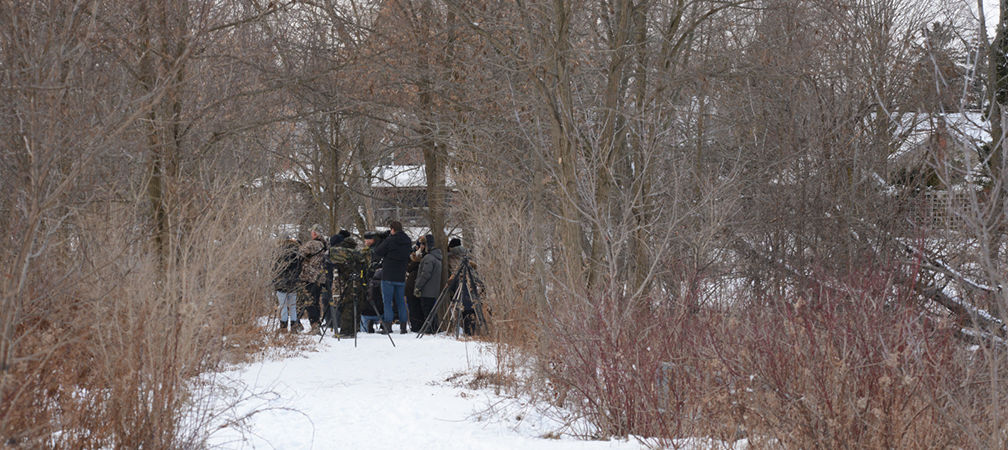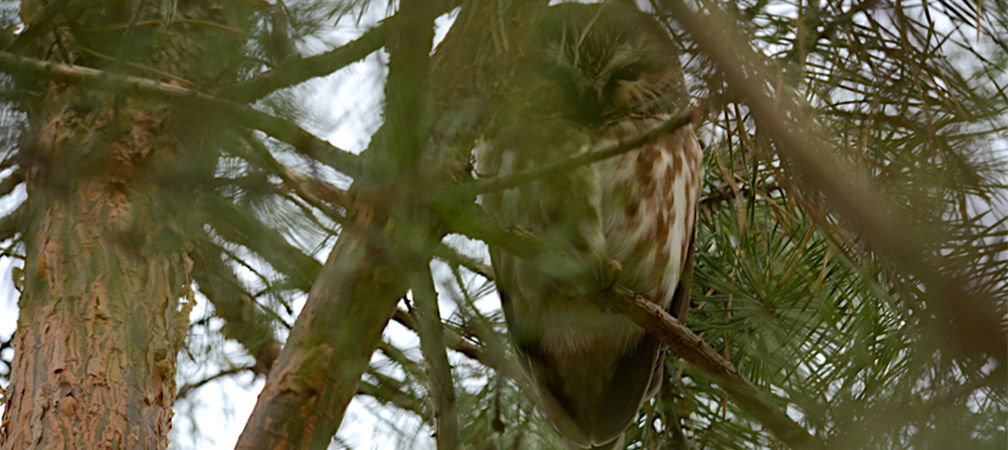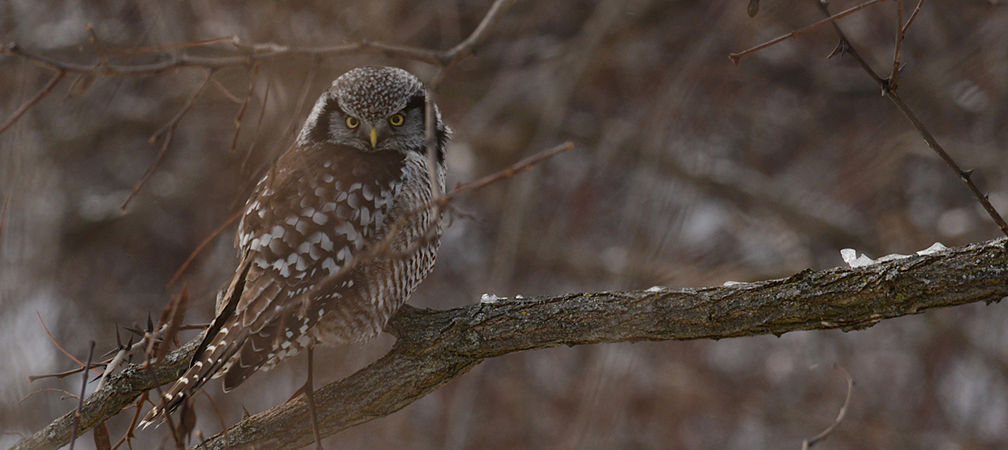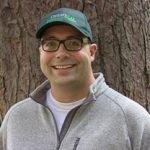Ontario Nature Blog
Receive email alerts about breaking conservation
and environmental news.
© Lora Denis
Snowy owl © Edith Maracle Berghout
The welfare and well-being of Ontario’s owls is no laughing matter.
With downward-trending owl populations due to increasing stressors and decreasing habitat availability, respecting owls and acting for the benefit of wildlife is vital. Distressing owls and causing them to leave their roosts yields further disturbance to owl populations and is a major threat to their safety.
As public interest in wildlife photography has increased, reports of unethical owl photography continues, including incidents of; trespassing, baiting, trampling habitat and being too close to the owls causing exacerbated distress.

Most owls are nocturnal and active at dawn and dusk and this is why owls are trickier to find than some other birds. For this reason, photographers will disturbingly resort to baiting in an attempt to capture charismatic owl images. Owl baiting is the practice of using live mice or lures to bait owls in an effort to capture the perfect action shot of an owl in flight. Sadly, as a result, owls suffer health hazards including; vehicular collisions, becoming entangled, and conditioned to lures and humans.
For their well-being, it is important not to reveal the location of owls in public forums. Last year in Ontario, after the location of a northern hawk owl was revealed to a network of birders, photographers parked illegally, baited the owl with string-bound rodents, and swarmed and followed the owl whenever it moved to a new perch.
Photographers frequently mistreat saw-whet owls who defensively stay still, by getting photos from disrespectful proximity. In November when visiting a site anticipating that saw-whets may have returned to a specific winter roost, disrespectful photographers pointed lenses at a resting owl too closely – less than two metres away.

The baiting of saw-whet owls occurred recently on an Ontario land trust property. After discovering that a photographer was baiting the owls, the president of the land trust released this statement in response:
“I wish to post a warning to all that there will be zero tolerance in the future for this unacceptable practice. [This] is private property, where people can access if they follow our posted rules, trespass charges will be immediate for any and all caught baiting any owls.”

Provincial parks and conservation areas also have rules against feeding wildlife, not just owls – many problems are associated with introduced foods that are not found naturally in the wild. Unethical behaviour not only sullies the reputation of individual photographers but also of birders who genuinely behave inoffensively.
Publications, including ON Nature magazine, will refuse photographs obtained by baiting, harassment or trespassing.
Ontario Nature firmly stands behind ethical guidelines and refers wildlife enthusiasts to the Ontario Field Ornithologists code of ethics.

Gananoque Lake Nature Reserve © Smera Sukumar
Well I guess we know who is feeding the owls, right Jeff!
I agree wholeheartedly with your statements Noah.
As an outdoorsmen and supporter of conservation management I see no reason for anyone to inject themselves this closely into nature. Instead why not enjoy it from an arms length. I wouldn’t appreciate my neighbours sitting on my deck watching through the windows while I ate or slept.
Connie Harviksen:
Your posting on this subject really hit the spot. Your suggestions are to be commended in full. I am a member of an informal group of bird photographers in central Alberta who all strongly condemn baiting. We do not share the locations of our owl finds with anyone who is not part of our little group. We do at times get too enthusiastic with our photography but generally avoid coming to close, calling out to or disturbing the owls we see aside from aiming our cameras at them. And we always encourage other photographers we encounter to hold to these rules as well. Hopefully over time all of us with these views will have a positive impact on those birders who do not follow them at the moment.
good article Noah- well said
Cheers
John
I totally agree with your article. As members of Couchiching Conservancy, my husband and I do citizen science to monitor birds, animals, water quality and invasive species to try to ascertain the abundance and needs of wildlife in the region and to protect their habitat. As a hobby photographer, I use a telephoto lens so that I can photograph birds and animals without getting too close and disturbing them.
I am appalled at the lengths to which some people will go for “entertainment”: baiting rare birds and animals to get a photo, shooting wild ducks and leaving the carcasses lying where they fall, tearing up the landscape and disturbing wildlife with snowmobiles. I am also very disturbed that the present Ontario government is gutting environmental laws for the sake of big business and profit when they should be working to save endangered species and to mitigate the effects of climate catastrophe.
I am very disappointed in the one-sided view presented by Ontario Nature. This is a complex issue and presenting only one side is alarming and full of hypocrisy. Many of us feed birds, including in provincial parks (Canada Jays in Algonquin for example). If followed, the advice presented here would end bird feeding in parks and perhaps everywhere. This is a major source of enjoyment for many of us and is beneficial to some species. Owls are also the gateway drug for many new birders and as such, exposure of non-birders to owls is important if we want to grow our hobby. I support open data and the benefits to conservation it presents. I recognise that not all bird records should be shared but sharing owl data should be taken on a case by case basis. Please do not tar and feather those of us who choose to share!
We have owls on our road just outside of Stayner. There are constantly groups of photogs that are brought by a person to photograph the snowys and they do so by baiting. Is there any law that says they cannot, we would like to stop them but not sure how. They stay on the road and bait from there.
Thanks very much for covering this story Noah!! As a Naturalist and very vocal ethical photographer, the last month or so has been very upsetting/crazy-making to be a follower on a few birding FB groups. Photos of the Hawk Owl in S. Ontario evoked considerable debate on both the Ontario Bird FB page and Ontario BIrd Photographers FB page. As angry as I got following these debates, it was good to see that these import discussions were taking place!! The Thunder Bay Field Naturalists took a stand on this 2 years ago, following extensive documentation including photos which I provided of unethical photographers. It took a bit of convincing for the Club to support me but they eventually understood and saw the evidence – some even when out to witness for themselves what I was warning them of. So now we have what we have simply dubbed a “Don’t Ask-Don’t Tell” policy on our FB page. No one is allowed to give or ask for location data on anything “for the protection of special interest plants, animals and the properties they are found on”. It has created a level of concern and respect for wild animals especially those that are of “special interest”. Followers have now come to know and expect zero tolerance and that their photos won’t get airplay – thus removing the photographer competition out of the equation. In fact, many know that they may be publicly chastised for their unethical behaviour or line of questioning. With 3,600 followers now, most now don’t even try it. It has made a big difference. As the manager of the TBFN FB page I have ZERO tolerance for this!!…and every chance I get on other FB groups I challenge people on their unethical behaviours. I always try to site other excellent resources eg. Audubon and Cornell that can back up the stance the I make to add credibility. I have also researched different legal angles eg. migratory bird act, OMNRF definition of harassing etc to give punch to certain arguments if applicable. Anyway…I could go on and on about this topic…in fact Ken and I have made public presentations on this topic. LOL. Thank you and Ontario Nature for putting this topic “Out There”. We all need to work on this.